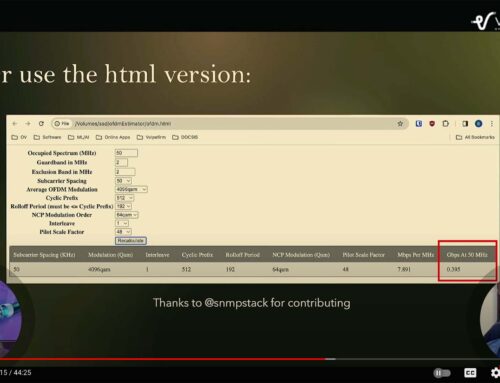DOCSIS 3.1 modems have ushered in a new era of high-speed connectivity. However, ensuring their consistent performance, especially in the face of network impairments, demands a robust strategy. This is where the synergy of the profile management application (PMA) and proactive network maintenance (PNM) becomes invaluable.
The twin pillars of optimal network performance
1. The PMA is designed to compensate for RF impairments in OFDM and OFDMA channels—it doesn’t fix the impairments, but goes a long way to work around them.
- Function: PMA is dedicated to refining the data transmission profiles of cable modems within the network. It meticulously tailors modulation profiles, adjusting to each subscriber’s distinct requirements and prevailing network conditions. This includes calibrations in modulation schemes, power levels, and other pivotal parameters to assure steadfast and efficient data transmission.
- Adaptive nature: A noteworthy feature of PMA is its continuous monitoring and dynamic adjustment to profiles based on ever-evolving network conditions. This agility ensures DOCSIS 3.1 subscribers always receive premium service quality.
2. PNM has matured and enables cable operators to identify and locate the root cause of most RF impairments, often before any impact to the subscribers.
- Function: PNM’s prowess lies in its foresight. Designed to pre-emptively identify and locate potential network impairments, it guarantees these don’t cascade into bigger issues affecting subscriber services.
- Diagnostic excellence: Armed with cutting-edge diagnostic tools and monitoring techniques, PNM offers real-time, invaluable insights into the network’s health. Whether addressing noise and interference, in-home issues, or external plant deterioration, PNM remains alert, delivering the industry’s clearest insight into RF impairments.
The confluence of PMA and PNM
When these two tools collaborate, the result is a holistic approach to managing cable networks. Their combined capabilities create a feedback loop where PMA ensures modems are functioning at their peak data speeds, while PNM detects any impairments, allowing cable operators to quickly rectify the impairment. In essence, the impairment detected by PNM can be rapidly mitigated by PMA’s profile adjustments, all the while PNM is guiding technicians directly to the source of the impairment.
The benefits of integration
Cable operators stand to gain immensely from this integration:
- Superlative quality of experience (QoE): Subscribers are treated to consistently top-notch and reliable services.
- Efficiency and efficacy: Modulation profiles are optimized, and budding issues are nipped in the bud, ensuring seamless network operations.
- Economical operations: With a proactive stance, the need for unplanned troubleshooting and extensive maintenance diminishes, leading to considerable cost savings due to avoidable truck rolls, effective field force management and reduced CSR calls.
Conclusion
In the realm of DOCSIS 3.1 cable plants, the combination of PMA and PNM emerges as more than just a strategy: it’s a transformative evolution. This cohesive integration doesn’t merely uplift network performance; it significantly enhances the end-to-end experiences of subscribers.
For forward-thinking cable operators, this approach isn’t just beneficial—it’s vital. The advantages for cable operators are manifold. Beyond the immediate improvement in network reliability, they witness a substantial return on investment (ROI). This ROI manifests in tangible CAPEX and OPEX savings derived from a streamlined workforce, a marked reduction in subscriber-related calls, and an elevated level of overall subscriber contentment. By adopting this strategy, operators position themselves at the forefront of industry innovation, ensuring longevity and customer loyalty in an ever-evolving marketplace. Ultimately, this results in reduced subscriber churn and increased ARPU (average revenue per user).





Leave a Reply